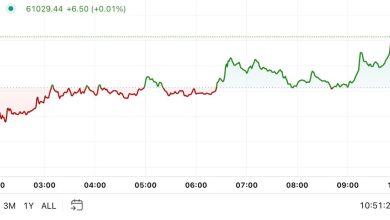Stablecoins Ready for Mainstream Payments, But Platforms Lag Behind


Stablecoins processed over $27 trillion in payments during 2024, prompting regulators worldwide to rush to create clear rules. In the span of just 12 months, the U.S. passed the GENIUS Act, the E.U. implemented MiCA and Hong Kong launched its own licensing regime. Regulatory uncertainty around payments has collapsed from 85 percent to 25 percent in two years. In that same period, other crypto sectors remained stuck in legal quicksand, spending their energy fighting regulators instead of serving users.
Today, over 85 percent of payment companies view stablecoin regulations as a net positive for business. While other corners of crypto continue to battle for legitimacy amid endless legal battles, payments are getting red-carpet treatment from governments eager to promote technology that solves real problems: faster settlement, lower costs and broader financial inclusion. But walk into most crypto platforms and you’ll find leverage tabs, yield farming and trading charts—not the simple payment tools that earned regulatory approval.
Platforms are chasing the wrong customers
According to the Federal Reserve, roughly 80 percent of stablecoin activity occurs in DeFi and trading, while only a small fraction involves merchant payments. This is largely because the industry built its infrastructure for yield farmers and arbitrage traders, not for businesses or individuals who need better payment systems.
The mismatch becomes obvious when you compare what users want. Many businesses cite real-time settlement as a top priority when adopting stablecoins. Yet most platforms still optimize for yield-seeking speculators who care more about APY than payment reliability and speed. This backward approach creates massive friction for mainstream adoption. Complex wallet setups confuse small business owners who just want to accept payments. Educational barriers overwhelm consumers who still associate crypto with volatility rather than utility.
Visit the homepage of any major crypto platform, and you’ll see that flash loans get prominent placement, while basic merchant tools hide in submenus. The user experience screams “speculate here” when businesses need “pay here.” It’s no wonder, then, that adoption is stuck at 5 percent, even with strong regulatory support. Merchants looking for PayPal with lower fees and faster settlement instead find DeFi protocols full of impermanent-loss warnings and automated market maker (AMM) explanations.
Crypto companies locked themselves out
Regulators handed crypto its first legitimate pathway to mainstream adoption, but most platforms can’t access it because they spent years optimizing for yield farmers instead of utility.
Traditional finance saw the gap and seized it. JPMorgan launched JPMD, a deposit token that functions like a stablecoin but integrates directly with traditional banking systems. The bank didn’t partner with existing crypto platforms or build on top of DeFi protocols. It created its own solution. That same pattern is visible through all of traditional finance. Visa expanded its USDC settlement capabilities by working directly with Circle, bypassing crypto exchanges entirely. Stripe spent $1.1 billion to acquire Bridge, bringing stablecoin infrastructure in-house rather than relying on existing platforms. Mastercard built comprehensive, end-to-end stablecoin transaction capabilities from scratch.
The result: traditional finance institutions are now building the payment infrastructure crypto platforms should have created. The regulated opportunity that crypto fought for years to achieve is now flowing around the industry rather than through it.
The path forward already exists
A few crypto companies recognized this shift early and built payment-first platforms that work with regulators. Circle, for example, designed USDC specifically for institutional use cases, maintaining full regulatory compliance and transparent reserve backing. This discipline paid off when major payment processors and banks began integrating USDC directly into their infrastructure.
For crypto companies hoping to compete in this space, reliability must come first. This means simple APIs developers can integrate within hours and streamline customer onboarding that follows standard Know Your Customer procedures. The user experience feels familiar to mainstream businesses because it should.
Payment utilities need uptime guarantees and fraud protection, backed by responsive customer support that speaks the language of business. DeFi jargon and governance tokens serve no value when what businesses want is reliable payment processing.
The infrastructure requirements are straightforward but demanding. Companies need seamless fiat on-ramps that work like traditional banking. They have to provide transparent fee structures that businesses can budget around, and a mobile-first design that feels like existing payment apps people already trust. Companies that build this boring but dependable infrastructure will win the regulated payment market that the crypto industry spent years trying to create.




